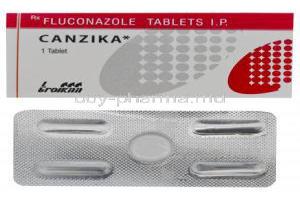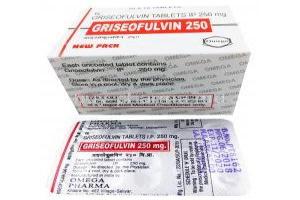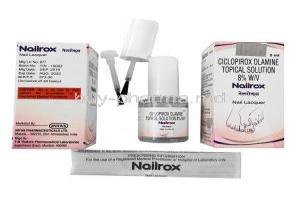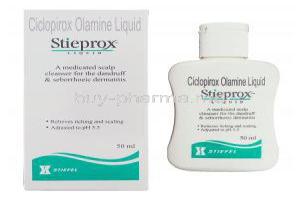Fluty TF, Terbinafine
- Introduction to Fluty TF and Terbinafine
- Composition of Fluty TF (Terbinafine)
- How Terbinafine Works
- Uses of Terbinafine
- Off-Label Uses of Terbinafine
- Dosage and Administration of Fluty TF
- Terbinafine side effects
- Important Precautions While Using Terbinafine
- Specific Administration Considerations
- Handling and Storage of Fluty TF
- Overdose Information and Emergency Procedures
- Warnings and Contraindications
- Careful Administration Practices
Introduction to Fluty TF and Terbinafine
Fluty TF, a top-tier treatment containing terbinafine as its active ingredient leads the way in dermatological care for fungal infections. Terbinafine hydrochloride is well known for its effectiveness in eliminating a range of fungal strains.
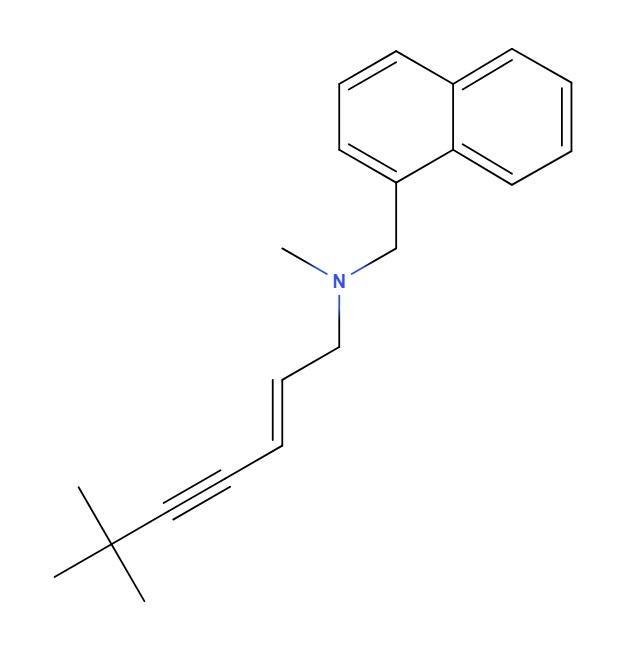
Terbinafine
- This overview discusses the origin and growth of Fluty TF along, with an examination of terbinafine's powerful antifungal properties.
- It also includes an outline of terbinafine's characteristics. A brief history outlining the development of Fluty TF.
- Expectations set for this article focus on gaining an understanding of Fluty TF composition and how it works.
Composition of Fluty TF (Terbinafine)
The creation of Fluty TF involves a combination of active and inactive components each playing a crucial role in improving the effectiveness of the medication.
- Terbinafine, the active ingredient is crafted to combat fungal cells while the inactive ingredients work to stabilize the formulation and prolong its shelf life. Terbinafine disrupts fungi cell membranes to eliminate them.
- The inactive ingredients contribute by maintaining consistency aiding absorption and ensuring the long-term stability of the formulation.
- Fluty TF comes in different forms, like creams, sprays, and oral tablets designed for specific types of fungal infections.
How Terbinafine Works
Terbinafine works uniquely and effectively by targeting elements within fungal cells. It enters the biochemical pathways that fungi rely on for survival.
- Its mechanism of action involves inhibiting the enzyme squalene epoxidase, which plays a role in synthesizing the fungal cell membrane.
- This interruption stops the production of ergosterol a component of the fungal cell membrane.
- As a result, the disruption, in ergosterol synthesis causes permeability and eventual breakdown of the fungal cell membrane ultimately leading to cell death.
Uses of Terbinafine
Terbinafine, a respected drug in the world of antifungal medications is highly praised for its strong effectiveness, in treating a wide range of fungal infections. This portion explores the purposes of terbinafine showcasing its exceptional performance when compared to other antifungal drugs.
Primary Indications for Terbinafine
Terbinafine is commonly used to treat fungal conditions like athlete's foot, ringworm, and nail fungus. It is highly regarded in dermatology and podiatry for its effectiveness.
- Athlete's foot, also known as tinea pedis shows results with terbinafine specific targeting of the infection-causing dermatophytes.
- When it comes to nail fungus (onychomycosis) terbinafine stands out for its success rate, in bringing about healing in many cases.
Effectiveness in Treating Fungal Infections
Terbinafine's effectiveness lies in its capability to eliminate cells by disrupting crucial cellular processes. This is achieved through a method that hinders the production of ergosterol a vital element of the fungal cell membrane.
Research has consistently shown that terbinafine shortens symptom duration. Speeds up recovery especially, in cases of skin and nail infections where alternative treatments might not be as effective.
Comparative Efficacy with Other Antifungals
When compared to antifungal medications terbinafine stands out for its effectiveness in various important aspects;
- Quick Action; Terbinafine is known for working swiftly leading to shorter treatment periods.
- Broad Effectiveness; Unlike some antifungals with reach terbinafine effectively addresses a wide array of fungal infections.
- Safety Record; Terbinafine has a safety record with few negative effects reported in clinical studies.
This detailed comparison highlights terbinafine as a choice, for treating fungal infections providing a powerful safe, and effective solution.
Off-Label Uses of Terbinafine
Terbinafine, known for its antifungal properties is now being explored for various nontraditional purposes. This investigation looks into the uses of terbinafine backed by real-world research and stories, from clinical practice assessing the pros and cons of these alternative applications.
Exploration of Non-Approved Uses
Although terbinafine is mainly known for its effectiveness in fighting fungal infections recent advancements in practices have expanded its potential uses to address other health issues. While these additional applications have not yet received approval from regulatory bodies they are based on emerging research indicating possible therapeutic advantages.
- Seborrheic Dermatitis; Some healthcare providers utilize terbinafine, for its inflammatory properties, which can help alleviate symptoms of seborrheic dermatitis.
- Scalp Psoriasis; Initial findings suggest that terbinafine might help reduce the flakiness and discomfort associated with scalp psoriasis.
Case Studies and Research Supporting Off-Label Use
An increasing collection of real-life examples and research projects lays the groundwork for the application of terbinafine. For example, an initial trial suggested that combining terbinafine with treatments significantly enhanced the management of scalp psoriasis.
Moreover looking back at data has emphasized the effectiveness of terbinafine in addressing seborrheic dermatitis demonstrating fewer outbreaks and enhanced comfort, for patients.
Potential Benefits and Risks of Off-Label Use
The use of terbinafine for purposes not officially approved offers advantages beyond its antifungal properties. However, it is important to consider these benefits in comparison to the associated risks.
- Advantages; Expanding the application of terbinafine to treat skin conditions could offer patients more effective treatment choices, particularly for cases where standard therapies are ineffective.
- Risks; Off-label use means using terbinafine without approval from regulatory authorities, which implies that the safety and effectiveness profiles may not be completely established, potentially resulting in unforeseen negative effects.
This balanced assessment emphasizes the importance of conducting clinical trials to confirm the safety and efficacy of using terbinafine, off label ensuring that its benefits clearly outweigh any risks involved.
Dosage and Administration of Fluty TF
Fluty TF, a medication that includes terbinafine is often recommended for treating fungal infections. It's important to follow dosage instructions use proper administration methods and make specific adaptations, for different patient groups to achieve the best treatment results.
Recommended Dosages for Different Conditions
The dosage of Fluty TF differs greatly based on the type of infection being treated.
- For Athlete foot cream should be used once a day for two weeks to achieve relief.
- In the case of Nail fungus, it is advised to take a medication usually 250 mg daily for 6 to 12 weeks depending on how severe the infection is and where it is located.
Methods of Administration and Timing
The effectiveness of Fluty TF; Cream greatly depends on how and when it's applied.
- For the cream, it is recommended to apply it on a dry area before bedtime to maximize its contact during sleep.
- As for the tablets, it is best to take them with water around the same time every day to ensure a steady level of medication in the bloodstream.
Adjustments for Specific Populations
Adjustments, in dosing need to be tailored for groups to reduce risks;
- For elderly patients lower doses might be needed because of reduced liver and kidney function.

Elderly Patient
- When it comes to children dosing must be adjusted according to their body weight and the nature of the infection.
Terbinafine side effects
Although terbinafine is usually well tolerated it may lead to a range of side effects from mild to severe, which require monitoring and treatment.
Common Side Effects and Their Management
The common side effects often seen are;
- Stomach discomfort, which can be alleviated by taking the medication along, with a meal.
- Skin rash is mild and can be treated with readily available antihistamines.
Serious Adverse Effects and Emergency Responses
In some cases, terbinafine may cause effects;
- Liver problems require stopping the medication right away and seeking medical help.
- Severe skin reactions, like Stevens-Johnson syndrome, need medical attention.
Long-Term Side Effects and Monitoring
Regular use of terbinafine over time could result in;
- Liver damage; It is advisable to undergo liver function tests.
- Changes, in taste; are usually temporary. It will resolve once the medication is stopped.
Important Precautions While Using Terbinafine
When giving terbinafine it's important to follow precautions to make sure it's safe and works effectively.
Interactions with Other Medications
Terbinafine can have interactions, with specific medications especially;
- Antidepressants; They might affect the levels of terbinafine in the bloodstream.
- Anticoagulants; This could potentially raise the chances of experiencing bleeding issues.
Environmental Factors Influencing Efficacy and Safety
Changes in the environment like being in the sun can impact how well and safely terbinafine works. For instance, patients should try to limit their time in the sun to lower the chance of being sensitive, to light.
Lifestyle and Dietary Considerations
Lifestyle and food preferences play a role in how well terbinafine works;
- Alcohol; Terbinafine and alcohol don't work well together It's best to steer off alcohol as it can worsen liver issues.
- Diet; Eating a diet is key, to staying healthy and making sure the medication works properly.
Specific Administration Considerations
Administering Fluty TF necessitates planning to meet the specific requirements of various patient populations. These personalized strategies guarantee safety and effectiveness in treatment for a range of individuals, such, as older adults, expectant and breastfeeding mothers, and children.
Administration to Elderly Patients
Elderly individuals frequently show changes in how their bodies process medications due to the aging process. It is crucial to adjust medication doses
1. Reduced Dosage; Lowering the doses may be necessary to prevent any harmful effects, on the body.
2. Monitoring; It is important to monitor for any negative effects, especially on liver and kidney functions.
Administration to Pregnant Women and Nursing Mothers
When giving Fluty TF to women and nursing mothers it's important to carefully consider the risks and benefits involved;
- For pregnant women; Terbinafine falls into pregnancy category B, which means there is no known risk, to humans but it should be used only when absolutely necessary.
- For nursing mothers; Terbinafine can pass through breast milk and potentially impact the baby so it's best to be cautious.
Administration to Children: Safety and Dosage Adjustments
When recommending Fluty TF for children it is crucial to consider safety and dosage factors;
- Age Suitability; for children aged 12 and above or younger, with close medical monitoring.
- Dosage; It is essential to calculate dosages accurately taking into account the child's weight and the seriousness of the infection.
Handling and Storage of Fluty TF
It's important to handle and store Fluty TF properly to ensure it remains effective and safe. Following the recommended conditions helps prevent the medication from degrading and becoming contaminated.
Proper Storage Conditions to Maintain Efficacy
Remember to keep Fluty TF in a dry spot away from direct sunlight and moisture to maintain its medicinal qualities;
- Temperature; Store at room temperature usually, around 20°C to 25°C (68°F to 77°F).
- Humidity; Steer of high humidity areas that could damage the product.
Handling Precautions to Avoid Contamination
To keep the medication uncontaminated it's important to follow handling procedures. After applying or handling the medication it's crucial to wash your hands for cleanliness. To prevent the transmission of infections, products such, as creams and sprays should not be shared among individuals.
Disposal Methods and Environmental Considerations
When getting rid of Fluty TF it's important to follow environmental safety guidelines;
- Medication Disposal; To avoid harm make sure to dispose of any unused or expired Fluty TF in accordance with local regulations.
- Packaging; Whenever feasible recycle the packaging materials to lessen the impact, on the environment.
Overdose Information and Emergency Procedures
In the event of an excessive intake of Fluty TF, quick identification and intervention are necessary. This segment details the signs, recommended treatments, and preventive measures to effectively handle and reduce the risks associated with overdosing.
Symptoms of Overdose and Immediate Actions
Consuming much Fluty TF can lead to various symptoms that require urgent medical attention;
- Initial signs of overdose often include stomach discomfort like nausea, vomiting, and abdominal pain.
- You may also experience dizziness, headaches, and confusion indicating involvement of the nervous system.
It's crucial to seek help, from emergency services and offer supportive care until professional assistance is accessible.
Treatment Protocols for Overdose
The primary approach to managing an overdose of Fluty TF involves providing symptomatic care.
- Gastric lavage could be an option if the person has ingested the substance within the hour.
- Additionally giving activated charcoal can assist in reducing the absorption of the drug from the stomach.
- It is crucial to monitor and address symptoms such as low blood pressure or breathing difficulties, as part of supportive care.
Prevention Strategies and Educating Patients
Preventing overdose is crucial, for giving Fluty TF.
- Providing patients with clear and straightforward dosage instructions can help avoid overdose incidents.
- Educating patients about the signs of overdose and stressing the importance of following prescribed doses is also essential.
Warnings and Contraindications
Certain medical issues and genetic elements have an impact, on the appropriateness and safety of Fluty TF requiring thorough evaluation and careful consideration before its use.
Specific Health Conditions that Preclude Use
- Fluty TF should not be used by patients with liver disease as it can increase the risk of liver injury.
- In cases of renal failure Terbinafine is not recommended as it could worsen the decline, in renal function.
Genetic Factors Influencing Terbinafine Tolerance
Genetic factors can influence how individuals process and handle terbinafine. Differences, in the CYP450 enzyme system may impact the way terbinafine is metabolized potentially resulting in either outcomes or harmful effects.
Alerts for Healthcare Providers and Patients
Healthcare professionals and individuals receiving treatment should stay informed about notifications concerning Fluty TF and liver Function Monitoring;
- It is advised for patients undergoing extended therapy to undergo regular liver function assessments.
- Recognizing Adverse Reactions; Patients need to be educated on reporting any unusual signs, like persistent nausea, fatigue, or jaundice.
Careful Administration Practices
To make sure that Fluty TF is used safely and effectively it's important to follow a process when giving it focusing on closely watching patients educating them well and recognizing the crucial role of healthcare professionals.
This comprehensive approach guarantees that treatment advantages are optimized while keeping risks at a minimum.
Monitoring and Follow-Up Recommendations
Regularly checking is important to evaluate how well Fluty TF works and to catch any reactions early on. It's important to do liver function tests and then keep monitoring regularly to quickly spot any liver-related issues that may arise.
Setting up follow up visits at times is necessary to track how the treatment is going and if the patient is following it as required. These actions are crucial, for customizing treatments based on each patients needs and health conditions.
Educating Patients on Self-Administration Techniques
Properly educating patients on how to self-administer Fluty TF is crucial for achieving the results. Patients need guidance on how to use the medication correctly with a focus, on getting the dosage right and taking it at the right times.
Demonstrating how to use the medication can help improve understanding and ensure patients follow the treatment plan properly. Keeping patients informed helps them stick to their treatment schedule and makes the medication more effective.

Taking medicine on time
Role of Healthcare Providers in Ensuring Safe Use
Healthcare professionals have a responsibility, in supervising the administration of Fluty TF to guarantee its safe and efficient use. They need to create treatment plans by considering each patient's unique profile and medical history.
Additionally, it is important for them to handle and minimize any risks linked to Fluty TF, such as informing patients about potential interactions and side effects. This proactive involvement contributes to protecting well-being and enhancing treatment results.






